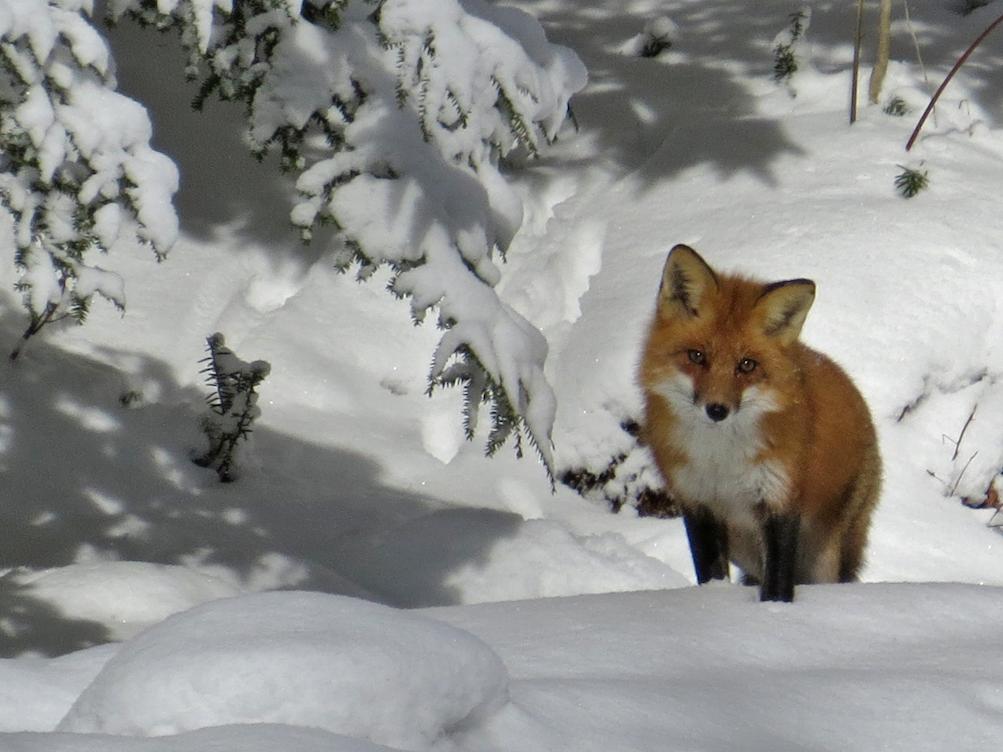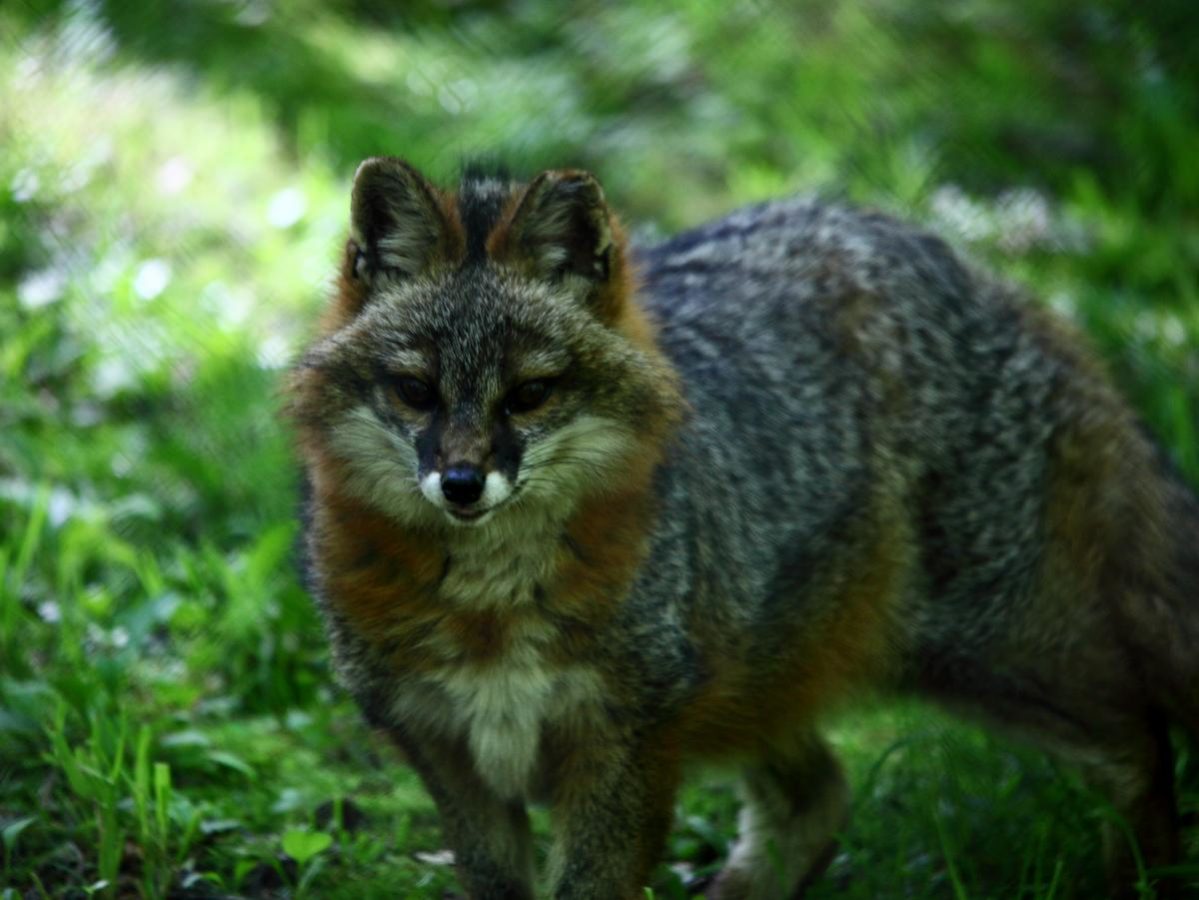Some species have culture-specific meanings: for example, although we think of dogs as loyal companions, other cultures condemn them as unclean or dangerous.
However, certain animals have earned consistent reputations for themselves. Foxes are notorious around the world for cunning, from the shape-shifting vixen-women of Japanese folklore to the trickster Fox of Native American myth and the smooth-talking fox of Aesop’s fables. Foxes are intelligent, though not obviously more intelligent than other canids. They seem wily to us only because we associate their appearance and behavior with those of deceitful humans, and because they prefer to live in the same places and eat the same things that we do.
New York is home to two fox species, the red (Vulpes vulpes), and the gray (Urocyon cinereoargenteus). Gray foxes generally inhabit warmer and more wooded environments; red foxes, with their luxurious coats, thrive in colder, more open landscapes. Canids usually hunt socially, running down animals and disembowelling them. However, foxes are solitary hunters: they stalk and pounce on their prey, killing with a single bite to the neck. Consequently, they move not with the frankness of dogs but the stealth and agility of cats. Masterful at evading predators (coyotes, bobcats, owls, humans), they have light, flexible skeletons that allow them to run very fast for short distances and slip into tiny spaces. The red fox can be a foot and a half at the shoulder, but it weighs on average no more than a substantial housecat.
Furthermore, the fox simply looks sly. We naturally identify shorter, more neotenous faces (which we prefer to breed into our own domestic dogs) with trustworthiness. The red fox in particular seems suspect because its muzzle is strikingly long, an adaptation that maximizes its olfactory powers. The golden, catlike eyes of foxes may look devilish to us, but light-colored irises and slit pupils are common among ambush hunters; vertical pupils seem to help predators follow their prey in low light. However, unlike cats, which are strict carnivores, foxes are very versatile omnivores, not at all fussy about what they eat: small mammals, birds, amphibians, reptiles, fish, invertebrates, eggs, fruit, acorns, and carrion.
The gray fox was once the more common fox in New York. However, thanks to deforestation and urbanization, the red fox has become dominant in many areas. Red foxes are the more adaptable and opportunistic species, preferring the mixed and edge landscapes that humans tend to create. The red fox’s tolerance of human presence, combined with its indiscriminate diet, means that it is more likely to make a nuisance of itself by eating the food that we leave behind (pet food, garbage, compost) or raiding our henhouses and rabbit hutches. A fox that finds itself surrounded by easy prey may kill indiscriminately and leave the carcasses behind. This propensity for surplus killing has led some people to conclude that the animal kills for pleasure, though it probably intends to cache the uneaten carcasses for later use.
If red foxes have gained some ground from anthropogenic changes in the landscape, they have lost in other ways. After gray wolves were extirpated, coyotes became apex predators. Coyotes compete with foxes for many of the same resources and will kill them if they get the chance, so an increase in coyote populations has resulted in a decline in fox populations. In this hostile environment, gray foxes have the advantage. They are not only more aggressive than their red cousins but eat more vegetable matter, so their diet overlaps less with that of coyotes. In addition, they are able to evade predators (as well as find eggs and nestlings to eat) by climbing trees. Unlike the claws of most canids, their claws are sharp, curved, and semi-retractable, and their rather short forelegs can rotate inward to hug tree trunks.
Humans have unfairly projected their own fears on foxes for millennia, but there is something genuinely unsettling about vulpine behavior of late: foxes are being seen in places that they do not belong. Warming global temperatures mean that the range of the gray fox is gradually expanding to encompass ever-higher latitudes and elevations. The red fox is also inching northward with each successive year, outcompeting and preying upon the much smaller arctic fox. Ultimately, it is not the foxes that we should fear, but ourselves.



